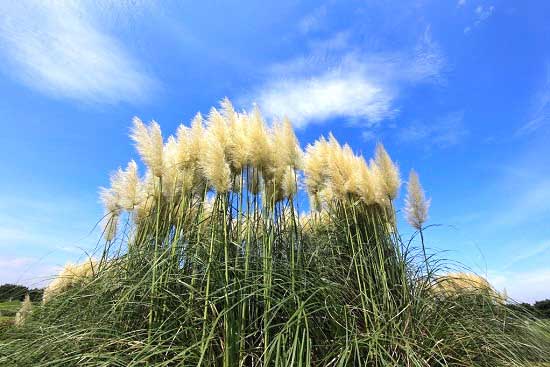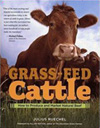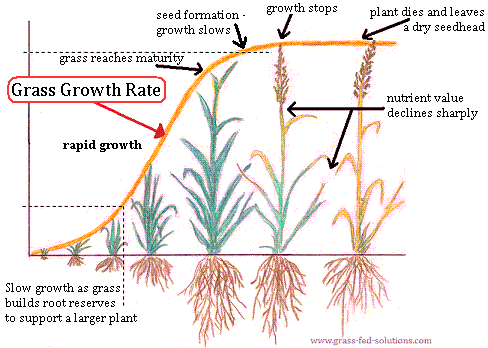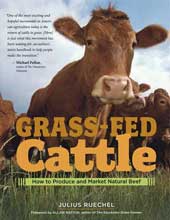Pasture Management with Electric Fences:
Improving Pasture Grass
Part I Part II Part III Part IV

Image Credit: Tanaka Juuyoh
Fence layout is the single most important pasture management tool at your disposal. Whether you want to boost pasture grass yields, eradicate pasture weeds, or increase soil moisture in your pastures, your electric fence grid is your primary tool to get the job done.
All the other tools in your management toolbox - fertilizers, pesticides, irrigation, pasture seed, and tillage equipment - take second place behind what you can accomplish with a smart electric fence grid.
When you learn how to use your electric fence grid to manage your pastures, you will find that you will rely less and less on all the other far more expensive tools in your pasture management toolbox. And the best part is that once your electric fence grid is built, your grazing cattle do all the work for free and the benefits that they provide to your pastures are sustainable and self-improving, unlike the other tools in your toolbox, which need to be re-applied year after year, at high cost, unless you can reduce or eliminate your need for them through a well-managed pasture rotation.
In this 4-part article I am going to give you a whirlwind tour of the wide range of pasture management applications that your electric fence grid can accomplish for you. Simply by being aware of of the enormous flexibility that a well-designed electric fence grid adds to your pasture management will help you design a much smarter electric fence grid for your rotational grazing program. For additional information about how to use electric fencing and your grazing herd as a pasture management tool, I recommend reading the "Grass and Grazing", "Electric Fences and Rotational Grazing", "Soil Fertility", "Weeds", and "Soil Moisture and Irrigation" chapters of my book, Grass-Fed Cattle: how to produce and market natural beef.
How to use electric fences to improve pasture grass yields
Your electric fence grid is your most important pasture management tool to improve your pasture yields. Your electric fence grid, created using a combination of permanent electric pasture fence corridors, which are subdivided using portable electric fence subdivisions (like a ladder with moveable rungs), allows you to easily create daily pasture moves that you can vary in size from day to day depending on how quickly or slowly you want your cattle to progress through their pasture rotation.
This ladder-like electric fence layout gives you enormous control over the grazing impact that your cattle have on your pasture grasses. This pasture fence layout allows you to change the speed of your daily pasture rotation at any time during the growing season simply by changing how much grass you choose to include in each day's pasture slice.
Once pasture grass goes to seed, it stops growing, which wastes valuable growing days and prevents you from achieving a higher grass yield. By being able to change the speed of your pasture rotation you can use your grazing cattle to keep up with grass growth to prevent your pasture grass from going to seed. At times this means you will merely be top-grazing your pastures to keep up with grass-growth, but often that's all it takes to keep the grass growing instead of switching its energy resources towards producing a seed head.
By using daily pasture moves in your pasture management, the grazing behavior of your cattle changes, which causes them to leave a much more consistent grass stubble height after grazing. The sense of competition created during a daily pasture rotation eliminates the picky selective grazing style that cattle otherwise tend to use, which causes some grass species to be grazed too short (which causes these short grasses to grow very slowly until they can rebuild their root reserves) while other grass species are left to go to seed (which causes these mature grasses to stop growing altogether).
|
By keeping your grass within the ideal height interval (taller than 6 to 10 inches, but grazed again before it can go to seed), you are creating the right pasture conditions for your grass to use soil nutrients and soil moisture to grow as fast as possible. This allows you to boost your grass yields simply by manipulating the timing of your pasture rotation to keep your grass growing at its optimal growth rate through the whole growing season! There is no point in spending money on fertilizer until after you have optimized your electric fence grid to maximize grass growth in your pastures. |
|
Using electric fences to improve grass quality and loosen soils
Manipulating the speed of your pasture rotation using your electric fence grid not only optimizes grass growth rates, it also allows you to improve your pasture quality. In the daily pasture rotation article I discussed that pasture quality improves dramatically simply by preventing your pasture grass from going to seed. But that's only part of the story...
How you organize your pasture rotation, and particularly whether you use daily or less frequent grazing slices in your pasture management, will change the grazing behavior and grazing preferences of your cattle herd. This affects which plants get grazed properly, which are overgrazed, and which are under-grazed all within the same pasture. This, in turn, changes the kinds of plants that will thrive in your pasture mix as the years go by.
How conventional pasture management gradually reduces pasture quality
To explain how your electric fence grid and pasture rotation can naturally improve pasture quality I will first start with a little background about how conventional pasture management affects your pasture plant species. In most conventionally-managed pastures with large pasture areas and infrequent pasture moves, the most desirable plant species gradually disappear as less desirable and less productive grasses slowly take over the pasture. This occurs naturally in pastures that do not use daily pasture moves because the cattle selectively over-target (overgraze) the tastiest prime grass species while avoiding (under-grazing) the less desirable grasses. The short overgrazed grasses can't compete for sunlight or water and are progressively choked out by the taller, less-heavily-grazed plant species that retain deeper roots and have more access to ground water.
Pasture Management Tip
Grass roots die back to reflect the amount of vegetative plant matter they support (and are supported by) above ground - root and plant always need to stay in balance with one another).
Because the most sought-out plants are targeted so heavily, they get grazed very short, which leaves them with very small root reserves after each grazing interval. This ensures that they can't reach soil moisture deeper in the soil horizon and are permanently suffering drought stress even as the less desirable plants are contentedly supported by larger roots drawing sufficient moisture from zones deeper in the soil.
Conventionally-managed pasture soils also become compacted over time through the heavy trampling of cattle feet when they are left on the same patch of pasture for long grazing periods. Compacted soils don't permit roots to extend easily, which causes the grass roots to become root-bound as roots all grow within the same immediate vicinity of the plant instead of having the freedom to extend outwards and broaden their reach.
Roots that cannot stretch out are at a disadvantage because it limits them to a much smaller area from which to draw nutrients and moisture, which contributes to nutrient shortages in both soil and grasses. Roots that can stretch out can access nutrients and moisture far deeper in the soil horizon and over a wider area, which improves soil fertility in the pastures and provides for more consistently-nutritious plant growth.
Improving pasture quality with electric fences and a daily pasture rotation
This is where your electric fence grid and your daily pasture moves come in! Electric fences, combined with daily pasture moves, help you maintain and improve your pastures simply by changing how your cattle impact your pastures during grazing. Daily pasture moves create competition in the herd as each herd member tries to graze their fill before the day's slice is used up. In this competitive atmosphere, there simply isn't time for selective grazing behavior.
The perceived grass shortage created by the daily pasture moves (many animals in a small space) ensures that every cow or steer is greedily gorging themselves with as much grass as possible before the pasture grass runs out. The sense of competition blinds your cattle to the reality that pasture slices are always big enough that stomachs are filled to capacity long before the last blade of grass is eaten. However, in this competitive frenzy no plant species is over-targeted. Nor are any of the less tasty plant species left off the menu. It all goes down the hatch before the cattle have time to be selective. This means that your most desirable plant species remain competitive and are constantly improving your pasture quality while plant species that are not ideal for grazing (such as weeds) are continually at a disadvantage against the highly competitive pasture grass species.
Furthermore, when cattle only spend a single day on each pasture slice during each grazing pass, their feet don't have time to compact the soil in heavily trafficked areas. Instead, their brief impact on the soil with their sharp hooves serves to fracture and loosen the surface of the soil and helps mix dead plant debris into the top soil layer where the soil microbes can set about breaking it down into humus and easily-accessible plant nutrients. The loosened soil will be primed to catch and absorb as much rainfall as possible, further helping the grass species thrive and out-compete plant species that invade drought-stressed pastures.
It's actually quite remarkable how by simply changing your grazing management to create a herd migration in your pastures you can continually improve both your pasture yields and the nutritional quality of your pastures in much the same way that the bison and wildebeest continually enhanced their prairie and savannah for thousands of years without a single plow or seeder to help them. This pasture management strategy eliminates the need for an entire complex arsenal of tillage, seeding, mowing, harrowing, aeration, and other pasture management equipment that farmers rely on to compensate for a poorly-designed grazing strategy and excessively long grazing intervals.
How to use electric fences to reseed pastures
In light of the previous discussion about improving pasture quality and loosening pasture soils, it also becomes easy to visualize how the brief impact of trampling cattle feet during each day's grazing episode allows the grass seeds to be pushed into the top layer of the soil where they can germinate.
This gives you the option of adding grass seed to your cattle's mineral mix so the cattle can spread the seeds through their manure. Their feet will punch the seeds into the soil and their manure will fertilize the seeds as they germinate - a perfect combination. This method allows you to gradually but effectively introduce new plant species into your pasture mix. For example, you may want to add Altai Wild Rye to your pasture mix because it is a tall pasture grass variety that retains nutrients well through the winter season so you can improve the quality of your winter pastures. Or, perhaps you want to add alfalfa, clover, or milk vetch to add some nitrogen-fixing legumes to your pasture mix and boost the pasture's nutritional quality for grass-finishing.
Introducing new plant species in this manner is a very gradual pasture management strategy that will change your pasture mix over several years, in contrast with the quick change that can be accomplished through tillage. However, it's very cheap (no tillage equipment required, no fuel, and no labor expenses - just the cost of seed). And this method ensures that you do not lose out on your current pasture yields during the reseeding process just to add a few new plant species to your pasture mix.
In a typical tillage-based reseeding scenario, you usually cannot graze the pasture during the first season after seeding because the sod mat is still too fragile to stand up to the trampling of cattle feet. Depending on the desired pasture mix, it can take up to three years for all the newly-seeded plant species to reach their full productivity. By introducing new plant species into your established pastures through the mineral ration, in combination with a daily pasture rotation, you're always increasing and never losing any of your current grass yield.
And consider the vast time and cost savings. A bag of seed added to a mineral feeder is virtually cost-free (a few dollars and all of an extra minute to stir the seed into the mineral mix when you're topping up the mineral ration for your cattle). Compare that to the hundreds of hours and thousands of dollars invested in tilling pastures, removing rocks from the seedbed that have been turned up by the tillage process, seeding the pastures, and then irrigating and fertilizing them to establish the new pasture. And all the while your cattle have to be kept off the delicate new seedbed and fragile new sod mat.
Pasture Management Tip: The best time to mix seed into your cattle's mineral mix (so your cattle can spread new seed varieties through your pastures) is in the early spring or late fall, when soils are moist to aid with germination.
Adding seed to a mineral feeder is not a cure for all pasture management situations, but if you have an established daily pasture rotation and if your soils are not too compacted, then it generally is a good first approach to take to add new plant species to your pasture mix. But sometimes pastures have been abused for so long and the soils are so compacted that it makes more sense to start over so you can get a more rapid change in your pasture quality and grass yield. Or, if you are trying to create a very specific type of pasture, such as a pure-alfalfa grass-finishing pasture (caution - this will require an intensive bloat-management strategy), then it will be time to break out the tillage equipment. However, most pasture reseeding situations won't require such an immediate or extreme change, in which case a bag of seed and your electric fence grid will go a long way towards adding variety to your pasture mix.
Another shortcut farmers often use to reseed pastures is to use a range seeder to seed directly into the existing sod mat. The success of this method depends on how root-bound and compacted the soils are before reseeding. Happily for you, if you have already implemented daily pasture moves this will considerably improve your germination rate when you use a range seeder to seed into established pastures because the soils have been loosened prior to reseeding through the impact of your grazing herd.
In Part II of this pasture management article, I will discuss how to use your electric fence grid and daily pasture rotation to improve your soil fertility, how to manage riparian areas, and how to selectively protect sensitive areas in your pastures to protect them from cattle damage, repair winter kill, or so you can boost pasture yields by being able to repair small damaged patches of pasture within an otherwise healthy pasture division.
Related Articles:
(Disclosure: I get commissions for purchases made using Amazon links in my post.) And when you're ready to start planning your cattle farm, check out my book: Grass-Fed Cattle: How to Produce and Market Natural Beef. Use the links below to explore my book and read reviews on Amazon: 
|





